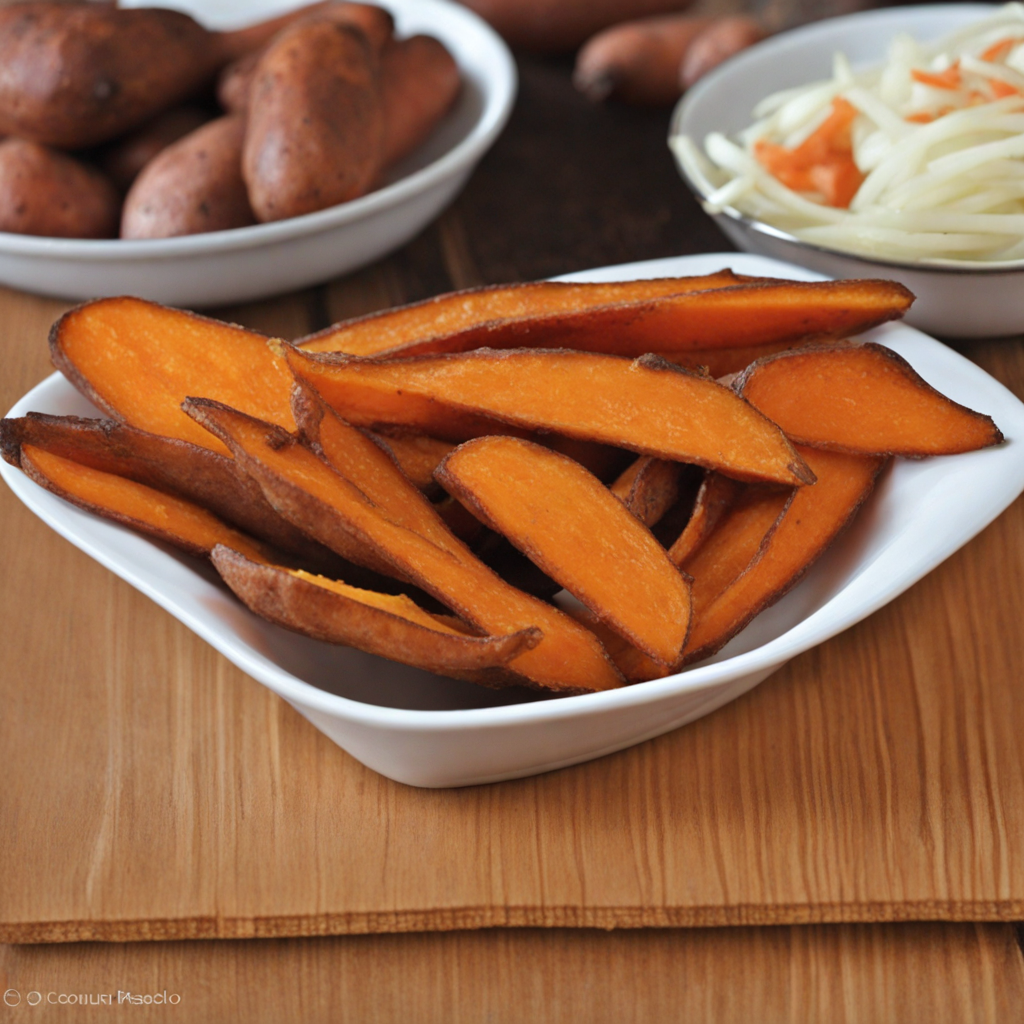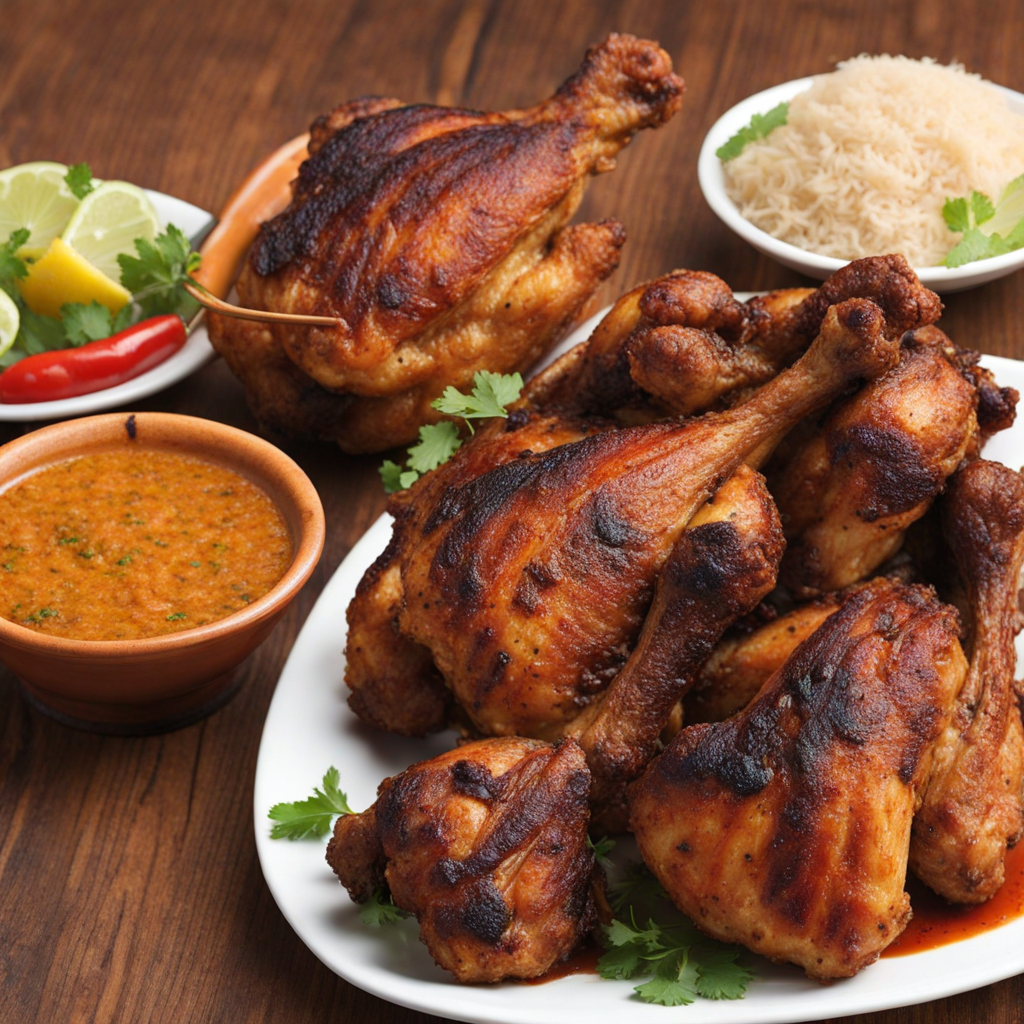Zoom Koom
Zoom Koom is a traditional dish from Burkina Faso that beautifully embodies the rich culinary heritage of West Africa. At its core, this dish features a base of millet or sorghum flour, which is steamed to a fluffy consistency, creating a comforting texture that serves as the perfect canvas for various accompaniments. The grains are often shaped into small balls or mounds, making them easy to scoop up and enjoy with other elements of the meal. This staple grain not only provides nourishment but also reflects the agricultural practices of the region, where these grains are commonly grown. What makes Zoom Koom particularly unique is its pairing with a variety of savory sauces or stews, often made from local vegetables, meats, and spices. Common ingredients might include peanut sauce, okra, and an assortment of seasonal vegetables, creating a vibrant medley of flavors and textures. The rich, nutty taste of the peanut sauce complements the mildness of the steamed grains, while the vegetables add freshness and brightness to each bite. The dish is typically enjoyed communally, encouraging shared experiences and deepening connections over food. As you delve into the world of Zoom Koom, you'll discover the importance of balance in flavors and how this dish encapsulates the spirit of Burkina Faso's culinary traditions. Each mouthful is a journey through the local landscape, showcasing the region's agricultural bounty and the community's dedication to preserving their culinary practices. Whether enjoyed at a family gathering or a festive celebration, Zoom Koom is not just a meal; it's an invitation to explore the heart and soul of Burkinabé culture through its delightful flavors.
How It Became This Dish
The History of Zoom Koom: A Culinary Treasure from Burkina Faso Introduction Zoom Koom, a traditional dish from Burkina Faso, is more than just sustenance; it embodies the essence of the country's cultural heritage and agricultural practices. This dish exemplifies the resourcefulness of the Burkinabé people, showcasing their ability to create nourishing meals from locally available ingredients. Its significance transcends the culinary realm, intertwining with social customs, celebrations, and the very identity of the communities that cherish it. Origins of Zoom Koom The origins of Zoom Koom can be traced back to the diverse agricultural practices of Burkina Faso, a landlocked country in West Africa characterized by its varied landscapes, from savannahs to plateaus. The name "Zoom Koom" translates to "sorghum porridge" in the local Moore language, which reflects the staple ingredients that form the backbone of this dish. Sorghum, a drought-resistant grain, has been cultivated in the region for thousands of years, making it an essential part of the Burkinabé diet. Historically, sorghum was not only a primary food source but also a symbol of resilience. As a crop that thrives in arid conditions, it has sustained communities through periods of drought and hardship. In the past, families would gather to prepare and consume Zoom Koom, reinforcing social bonds and community ties. Cultural Significance Zoom Koom holds a special place in the heart of Burkinabé culture. It is often served during significant life events, such as births, weddings, and harvest festivals. In many communities, the preparation of Zoom Koom is a communal activity, bringing together families and neighbors. This collective effort not only strengthens social cohesion but also allows for the transmission of culinary knowledge from one generation to the next. The dish is typically made by boiling sorghum flour in water until it reaches a smooth, creamy consistency. It is often accompanied by a variety of toppings and sides, such as milk, sugar, or local vegetables, enhancing its flavor and nutritional value. This versatility allows Zoom Koom to adapt to different occasions and preferences, making it a beloved staple in many households. In addition to being a source of nourishment, Zoom Koom is also steeped in symbolism. It is often associated with prosperity and fertility, reflecting the agricultural roots of Burkinabé society. During harvest festivals, the preparation and sharing of Zoom Koom serve as a way to give thanks for the bounty of the land and to celebrate the community’s hard work. Development Over Time As Burkina Faso has evolved, so too has the dish of Zoom Koom. Throughout history, the influences of neighboring cultures and the introduction of new ingredients have shaped its preparation and presentation. While sorghum remains the primary ingredient, variations of Zoom Koom have emerged, incorporating rice, millet, or even corn, depending on local availability and preferences. With colonization and globalization, the culinary landscape of Burkina Faso has been affected by external influences. New cooking techniques, utensils, and flavor profiles have been introduced, prompting some shifts in traditional recipes. However, many families have remained committed to preserving the authenticity of Zoom Koom, often using traditional methods that have been passed down through generations. In contemporary Burkina Faso, Zoom Koom is not only a household staple but also a dish that embodies the country's cultural identity on a global stage. As Burkinabé communities migrate and settle in different parts of the world, they bring their culinary traditions with them. Zoom Koom has found its way into international food festivals and cultural events, where it serves as a delicious ambassador of Burkinabé heritage. Zoom Koom in the Modern Context In the modern era, there has been a resurgence of interest in traditional foods, driven by a global movement towards sustainability and healthy eating. As people become more aware of the nutritional benefits of local grains like sorghum, Zoom Koom is being rediscovered as a wholesome and nutritious option. The dish is rich in fiber, vitamins, and minerals, contributing to its appeal in health-conscious circles. Moreover, the rise of food tourism has brought attention to Burkina Faso's rich culinary traditions. Travelers seeking authentic experiences are increasingly drawn to local dishes like Zoom Koom, not just for their taste but also for the stories they tell about the culture and history of the region. This interest has led to the establishment of culinary tours and workshops, where visitors can learn about the preparation of Zoom Koom and other traditional dishes directly from local chefs and families. Conclusion Zoom Koom is more than just a dish; it is a testament to the resilience, creativity, and communal spirit of the Burkinabé people. Its history reflects the agricultural roots of Burkina Faso, the significance of communal bonds, and the adaptability of culinary traditions in the face of change. As it continues to evolve while retaining its cultural essence, Zoom Koom remains a cherished symbol of identity and heritage for the people of Burkina Faso. The journey of Zoom Koom from a staple food to a cultural ambassador illustrates the power of food to connect us to our history and to each other. As Burkinabé communities around the world share their traditional recipes and cooking methods, they not only preserve their culinary heritage but also invite others to experience the rich tapestry of flavors and traditions that define their culture. In this way, Zoom Koom stands as a flavorful bridge between the past and the present, nourishing both body and soul.
You may like
Discover local flavors from Burkina Faso







